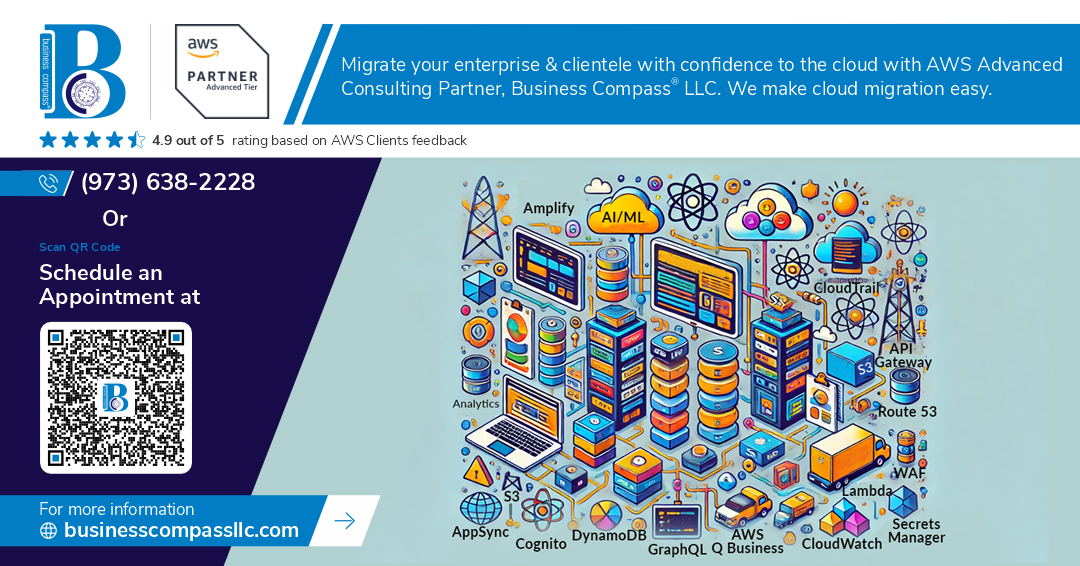Introduction
AWS Amplify’s GraphQL Transformer is a powerful framework for rapidly creating scalable AppSync APIs. However, when projects grow to include many models, relations, and resolvers, a limitation appears in the deployment layer. This limitation stems from CloudFormation’s hidden constraint: it cannot handle more than approximately 2,500 resource operations in a single stack update.
When Amplify exceeds this limit, deployments begin to fail with the error:
Limit on the number of resources in a single stack operation exceeded
Once triggered, this error prevents further amplify push operations — even if the issue is unrelated to user changes. This guide explains the underlying cause, how to manually recover a broken API, and the complete long-term automated fix.
1. Why This CloudFormation Limitation Occurs
Most developers are familiar with CloudFormation’s documented limit of 500 resources per nested stack, but few know about the operational limit:
CloudFormation cannot touch more than ~2,500 resources in a single update operation.
This number includes:
- Creation
- Update
- Deletion
- No-op touches (updates with no changes)
Why Amplify triggers this limit
Amplify’s GraphQL Transformer attempts to regenerate and reapply:
- All resolvers
- All pipeline functions
- All AppSync data sources
- All nested model stacks
- All connection stacks
—even when no changes are made to those resources.
As your schema grows (50+ models, 300–500+ resolvers), a single amplify push can easily exceed the 2,500-touch threshold, causing deployments to fail permanently.
2. Symptoms When the Limit Is Hit
When the limit is exceeded, you will see:
Limit on the number of resources in a single stack operation exceeded
Followed by CloudFormation nested stacks stuck in:
- UPDATE_FAILED
- UPDATE_ROLLBACK_FAILED
At this point:
- amplify push cannot proceed
- You cannot remove or add models
- You cannot modify the schema
- The API becomes “frozen”
3. Manual AWS Recovery Procedure (Temporary Workaround)
If your API is already stuck, AWS recommends the following:
Step 1 — Choose a model without @connection
Modify its schema:
@model(queries: null, mutations: null)
This removes its resolvers.
Step 2 — Regenerate stacks
amplify api gql-compile
Step 3 — Update nested stack manually
- Open CloudFormation Console
- Locate the nested stack for that model
- Click Update → Replace Template
- Upload:
amplify/backend/api/<api-name>/build/stacks/<model>.json
- Confirm that resolvers are being removed
Step 4 — Deploy & retry
After deployment, rerun:
amplify push
Repeat this workflow until the number of touched resources drops below the 2,500-operation limit.
This works temporarily but is tedious, error-prone, and does not solve the root cause.
4. Long-Term Fix: Resolver Stack Mapping
Amplify includes a powerful but under-documented feature:
transform.conf.json
This file allows developers to assign each resolver to a separate CloudFormation stack.
Why this works
By placing resolvers into distinct stacks:
- CloudFormation only touches the affected resolver stack
- The full API no longer triggers 2,500 resource operations
- Large schemas deploy reliably
- Amplify becomes scalable to enterprise workloads
This is the recommended architectural fix.
5. Automated Resolver Splitter Script
Business Compass LLC provides a fully automated production-ready script that:
- Auto-detects your Amplify project and GraphQL API
- Runs GraphQL compile
- Scans all generated stack templates
- Automatically extracts all resolvers
- Builds transform.conf.json with stack mapping
- Logs all operations
- Performs a safe amplify push
📂 GitHub Repository
Full script and documentation:
https://github.com/altmanzscoreplus/amplify-resolver-splitter.git
This script solves the issue permanently.
6. Usage Examples
Basic
./amplify-resolver-splitter.sh
Specify project path
./amplify-resolver-splitter.sh -p ~/projects/my-amplify-project
Specify API explicitly
./amplify-resolver-splitter.sh -p ~/projects/my-app -a myApiName
Custom log file
./amplify-resolver-splitter.sh -l ~/logs/amplify-splitter.log
7. Best Practices for Large Amplify GraphQL Projects
To avoid CloudFormation limitations:
Recommended
✔ Use custom stacks early (transform.conf.json)
✔ Break schemas into modular segments
✔ Delete unused models, fields, and connections
✔ Limit nested @connection relationships
✔ Run amplify api gql-compile regularly
✔ Keep resolvers lightweight
Avoid
✖ Monolithic schemas with 100+ models
✖ Heavy use of nested relationships
✖ Large numbers of pipeline resolvers in a single stack
8. Conclusion
CloudFormation’s operational limitation of 2,500 resource touches per deployment can block Amplify GraphQL APIs in large-scale applications.
Resolver stack mapping — especially when automated — provides a permanent, scalable solution.
By using the automation script provided by Business Compass LLC, teams can:
- Prevent deployment lockouts
- Scale GraphQL APIs safely
- Maintain velocity even as schemas grow
For support, consulting, or enterprise Amplify architecture assistance:Business Compass LLC
Website: https://businesscompassllc.com
PO Box 564
Mt. Freedom, NJ 07970
Phone: +1 (973) 638-2228
GitHub: https://github.com/altmanzscoreplus/amplify-resolver-splitter.git




















